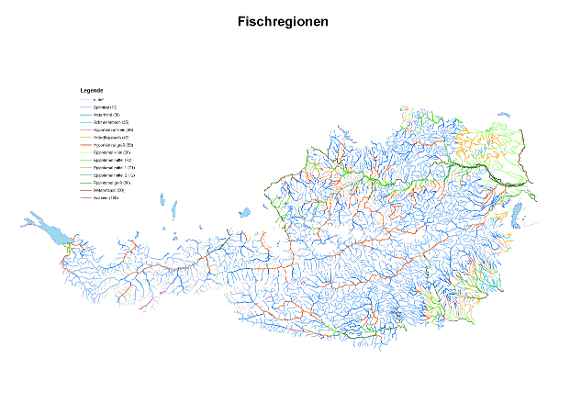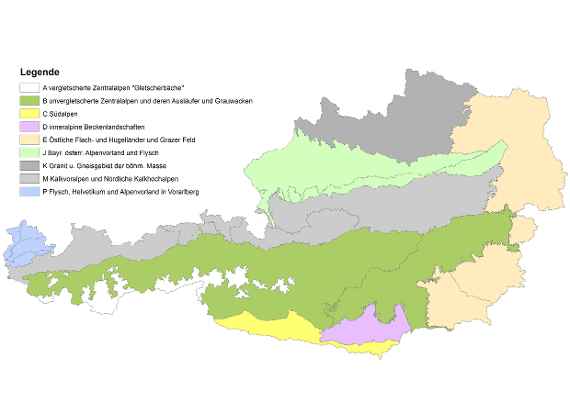In order to evaluate the ecological status of river systems, they are assigned to certain types. A mountain torrent is home to a different community of species than a river in the Eastern Lowlands. The basis of the so-called type-specific approach is the establishment of reference fish species assemblages.
The Water Framework Directive (EU WFD) and subsequently, the Austrian Wasserrechtsgesetz (in English for Water Law Act) call for a typological classification of water and a type-specific assessment of fish stocks. For this purpose, type-specific fish species assemblages have been developed.
The watercourses were grouped due to the similarity of characteristic abiotic parameters. Based on the area-based approach of the ecoregions, 17 river type regions were distinguished, as well as the special type "Large River" (Wimmer & Chovanec 2000 and Moog et al 2001). From this, nine fish ecologically relevant bioregions were derived.
The second step was the longitudinal classification of rivers, adapted from the system of Huet (1949), resulting in 12 biocenotic regions, the so called fish regions.
For each bio region and biocenotic region a fish species assemblage was defined in form of dominant species, subdominant species and rare species, as well as water body sections with a special (adapted) fish species assemblage. The basis for this classification were historical sources, current data from reference sites, and expert judgement.
For further information see Haunschmid et al. (2006) -in German only-: Erstellung einer fischbasierten Typologie österreichischer Fließgewässer sowie einer Bewertungsmethode des fischökologischen Zustandes gemäß EU-Wasserrahmenrichtlinie.


